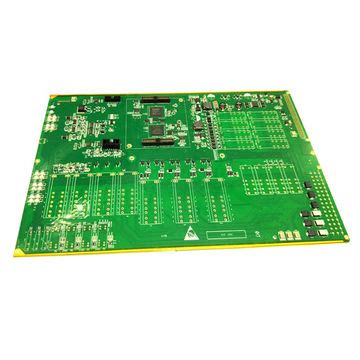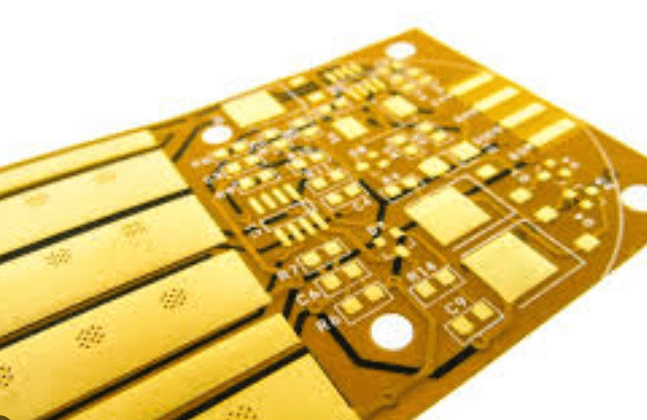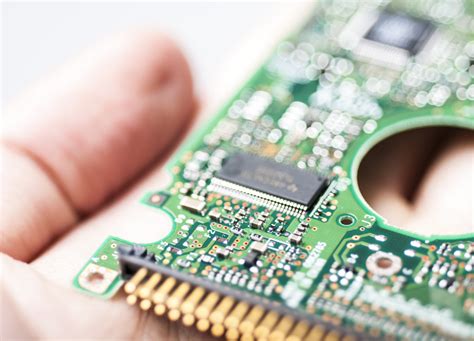Flex pcb laser welding
Advantages Of Flex PCB Laser Welding In Modern Electronics
Flex PCB laser welding has emerged as a pivotal technology in the realm of modern electronics, offering a multitude of advantages that significantly enhance the manufacturing process and the performance of electronic devices. One of the primary benefits of this technique is its precision. Laser welding allows for highly accurate joining of components, which is crucial in the production of flexible printed circuit boards (PCBs) that are often used in compact and intricate electronic devices. This precision ensures that the connections are reliable and durable, reducing the likelihood of failures and enhancing the overall quality of the final product.
Moreover, the speed of laser welding is another notable advantage.
Traditional welding methods can be time-consuming and labor-intensive, often requiring multiple steps to achieve the desired results. In contrast, laser welding can be completed in a fraction of the time, thanks to its ability to deliver concentrated energy to a very small area. This efficiency not only accelerates the production process but also reduces labor costs and increases throughput, making it an economically viable option for large-scale manufacturing.
In addition to speed and precision, the versatility of flex PCB laser welding cannot be overstated.
This technique is compatible with a wide range of materials, including various metals and polymers commonly used in the electronics industry. This compatibility allows manufacturers to design and produce more complex and innovative electronic devices without being constrained by material limitations. Furthermore, laser welding can be easily integrated into automated production lines, enhancing consistency and repeatability while minimizing human error.
Another significant advantage of flex PCB laser welding is its ability to create strong and reliable joints without the need for additional materials such as solder or adhesives.
This not only simplifies the manufacturing process but also eliminates potential sources of contamination and failure. The absence of solder, in particular, is beneficial in applications where thermal management is critical, as it reduces the risk of thermal fatigue and improves the overall thermal performance of the device.
Environmental considerations also play a role in the growing adoption of laser welding for flex PCBs.
Traditional welding methods often involve the use of fluxes and other chemicals that can be harmful to both the environment and human health. Laser welding, on the other hand, is a cleaner process that generates minimal waste and does not require hazardous substances. This aligns with the increasing emphasis on sustainable manufacturing practices and helps companies meet stringent environmental regulations.
Furthermore, the non-contact nature of laser welding is particularly advantageous for flexible PCBs, which are often delicate and prone to damage from mechanical stress.
The focused laser beam can join components without physically touching them, thereby preserving the integrity of the flexible substrate and reducing the risk of deformation or breakage. This is especially important in applications such as wearable electronics and medical devices, where reliability and durability are paramount.
In conclusion, the advantages of flex PCB laser welding in modern electronics are manifold, encompassing precision, speed, versatility, and environmental benefits. This technology not only streamlines the manufacturing process but also enhances the performance and reliability of electronic devices. As the demand for more sophisticated and compact electronics continues to grow, the adoption of laser welding for flexible PCBs is likely to become even more widespread, driving further innovation and efficiency in the industry.
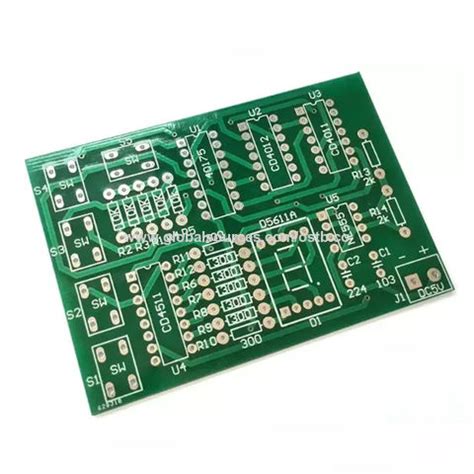
Key Techniques For Effective Flex PCB Laser Welding
Flex PCB laser welding is a sophisticated process that requires precision and expertise to ensure optimal results. This technique is pivotal in the manufacturing of flexible printed circuit boards (PCBs), which are essential components in various high-tech applications, including medical devices, consumer electronics, and automotive systems. To achieve effective flex PCB laser welding, several key techniques must be meticulously followed.
First and foremost, understanding the material properties of the flex PCB is crucial.
Flexible PCBs are typically made from polyimide or polyester substrates, which possess unique thermal and mechanical characteristics. These materials can withstand high temperatures but are also susceptible to thermal damage if not handled correctly. Therefore, selecting the appropriate laser wavelength and power settings is essential to avoid compromising the integrity of the substrate. For instance, using a laser with a wavelength that matches the absorption characteristics of the polyimide can enhance the efficiency of the welding process.
In addition to material considerations, the alignment of the laser beam plays a significant role in achieving precise welds.
Accurate alignment ensures that the laser energy is concentrated on the intended welding area, minimizing the risk of damaging adjacent components or layers. Advanced laser systems equipped with vision-based alignment tools can significantly enhance the accuracy of the welding process. These systems use cameras and image processing algorithms to detect and correct any misalignments in real-time, thereby ensuring consistent and high-quality welds.
Moreover, controlling the laser parameters, such as pulse duration, repetition rate, and focal spot size, is vital for effective flex PCB laser welding.
The pulse duration determines the amount of energy delivered to the material in a given time, which influences the depth and quality of the weld. Shorter pulse durations are generally preferred for welding thin layers, as they reduce the heat-affected zone and prevent thermal damage. On the other hand, the repetition rate affects the overall heat input and can be adjusted to optimize the welding speed and quality. A higher repetition rate can increase the welding speed but may also lead to excessive heat accumulation, necessitating a careful balance.
Furthermore, the focal spot size of the laser beam impacts the precision and strength of the weld.
A smaller focal spot size allows for finer and more detailed welds, which is particularly important for intricate flex PCB designs. However, achieving a small focal spot size requires precise control of the laser optics and beam delivery system. Utilizing advanced optical components, such as beam expanders and focusing lenses, can help achieve the desired focal spot size and improve the overall welding quality.
Another critical aspect of flex PCB laser welding is the use of appropriate fixturing and clamping mechanisms.
Proper fixturing ensures that the flex PCB remains stable and in the correct position during the welding process, preventing any movement that could lead to misalignment or defects. Clamping mechanisms should be designed to apply uniform pressure across the welding area without causing deformation or damage to the flexible substrate. Additionally, incorporating cooling systems into the fixturing setup can help dissipate heat and prevent thermal damage to the flex PCB.
In conclusion, effective flex PCB laser welding requires a comprehensive understanding of material properties, precise alignment of the laser beam, meticulous control of laser parameters, and appropriate fixturing and clamping mechanisms. By adhering to these key techniques, manufacturers can achieve high-quality welds that ensure the reliability and performance of flexible printed circuit boards in various applications. As technology continues to advance, ongoing research and development in laser welding techniques will further enhance the capabilities and applications of flex PCBs, driving innovation across multiple industries.
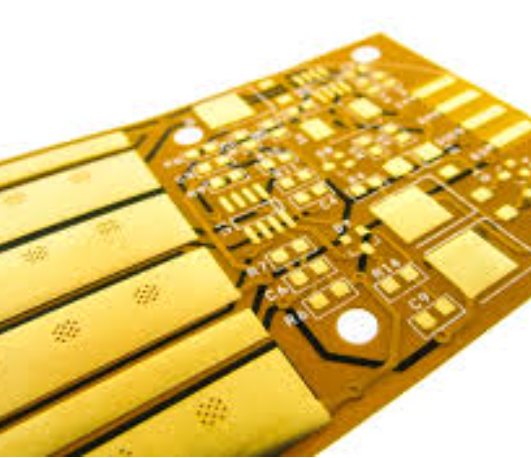
Common Challenges And Solutions In Flex PCB Laser Welding
Flex PCB laser welding is a sophisticated process that involves the precise joining of flexible printed circuit boards (PCBs) using laser technology. This method is highly valued for its ability to create strong, reliable connections in compact and intricate electronic assemblies. However, despite its advantages, flex PCB laser welding presents several challenges that can impact the quality and efficiency of the welding process. Understanding these challenges and their corresponding solutions is crucial for achieving optimal results.
One of the primary challenges in flex PCB laser welding is the alignment of the laser beam with the welding area.
Due to the flexible nature of the PCBs, maintaining precise alignment can be difficult. Misalignment can lead to incomplete welds or damage to the surrounding components. To address this issue, advanced vision systems and alignment tools are employed. These systems use cameras and sensors to ensure that the laser beam is accurately positioned, thereby enhancing the precision of the welding process.
Another significant challenge is the thermal management during the welding process.
The heat generated by the laser can cause thermal deformation or damage to the delicate components of the flex PCB. This is particularly problematic for materials with low thermal conductivity. To mitigate this, manufacturers often use pulsed laser systems that deliver energy in short bursts, reducing the overall heat input. Additionally, cooling systems and heat sinks can be integrated into the welding setup to dissipate excess heat and protect the integrity of the PCB.
Material compatibility is also a critical factor in flex PCB laser welding.
Different materials have varying absorption rates for laser energy, which can affect the quality of the weld. For instance, some materials may reflect the laser beam, while others may absorb it too quickly, leading to overheating. To overcome this, it is essential to select materials that are compatible with the specific wavelength of the laser being used. Conducting thorough material testing and characterization can help in identifying the most suitable materials for the welding process.
The presence of contaminants on the surface of the flex PCB can also pose a challenge.
Dust, oils, and other impurities can interfere with the laser welding process, resulting in weak or defective welds. To ensure a clean welding environment, rigorous cleaning protocols must be followed. This includes using specialized cleaning agents and equipment to remove any contaminants from the PCB surface before welding. Additionally, maintaining a controlled environment with minimal airborne particles can further enhance the quality of the welds.
Moreover, the complexity of the flex PCB design can influence the welding process.
As electronic devices become more compact and intricate, the design of flex PCBs has also become more complex. This complexity can make it challenging to access the welding areas and achieve consistent weld quality. To address this, manufacturers can employ advanced laser systems with high precision and flexibility. These systems can navigate complex geometries and deliver consistent welds even in hard-to-reach areas.
In conclusion, while flex PCB laser welding offers numerous advantages, it also presents several challenges that must be addressed to ensure high-quality welds. By employing advanced alignment systems, managing thermal effects, selecting compatible materials, maintaining a clean environment, and utilizing sophisticated laser systems, manufacturers can overcome these challenges and achieve reliable and efficient welding results. Understanding and addressing these common challenges is essential for optimizing the flex PCB laser welding process and ensuring the performance and longevity of electronic assemblies.
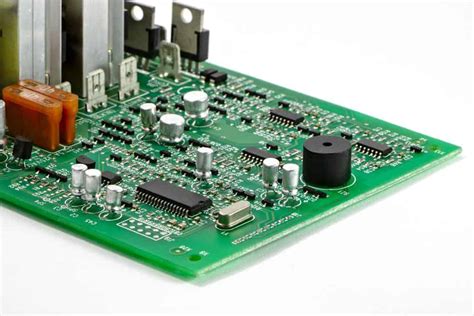
Future Trends In Flex PCB Laser Welding Technology
Flex PCB laser welding technology has been evolving rapidly, driven by the increasing demand for miniaturized and high-performance electronic devices. As industries such as consumer electronics, automotive, and medical devices continue to push the boundaries of innovation, the need for more efficient and precise manufacturing techniques becomes paramount. Flex PCB laser welding, with its ability to provide high precision and reliability, is poised to play a crucial role in meeting these demands.
One of the most significant future trends in flex PCB laser welding technology is the integration of advanced automation and artificial intelligence (AI).
Automation in laser welding processes can significantly enhance production efficiency by reducing human error and increasing throughput. AI, on the other hand, can be employed to optimize welding parameters in real-time, ensuring consistent quality and reducing material wastage. By leveraging machine learning algorithms, AI can predict potential defects and adjust the welding process accordingly, thereby improving overall yield and reliability.
Another promising trend is the development of ultrafast laser systems.
Traditional laser welding systems operate in the nanosecond range, but ultrafast lasers, which operate in the picosecond or femtosecond range, offer several advantages. These include reduced thermal damage to the surrounding materials, higher precision, and the ability to weld a wider range of materials. As ultrafast laser technology becomes more accessible and cost-effective, it is expected to revolutionize the flex PCB manufacturing process by enabling more intricate and delicate designs.
Moreover, the advent of hybrid laser welding techniques is set to enhance the capabilities of flex PCB manufacturing.
Hybrid laser welding combines the benefits of different welding methods, such as laser welding and traditional arc welding, to achieve superior results. This approach can provide better control over the welding process, resulting in stronger and more reliable joints. Additionally, hybrid techniques can be tailored to specific applications, offering greater flexibility in the manufacturing process.
The use of advanced materials in flex PCBs is also influencing the future of laser welding technology.
As new materials with enhanced electrical, thermal, and mechanical properties are developed, laser welding techniques must adapt to accommodate these innovations. For instance, the incorporation of flexible and stretchable materials in PCBs requires welding methods that can maintain integrity under mechanical stress. Laser welding systems that can precisely control energy input and distribution are essential for successfully joining these advanced materials without compromising their properties.
Furthermore, the trend towards miniaturization in electronic devices necessitates advancements in laser welding technology.
As components become smaller and more densely packed, the precision and accuracy of laser welding must improve correspondingly. Innovations such as beam shaping and adaptive optics are being explored to achieve the required level of precision. These technologies allow for the manipulation of the laser beam to match the specific requirements of the welding task, ensuring high-quality joints even in the most challenging scenarios.
In addition to these technological advancements, the future of flex PCB laser welding will also be shaped by environmental considerations.
As industries strive to reduce their carbon footprint, there is a growing emphasis on sustainable manufacturing practices. Laser welding, with its high efficiency and minimal material wastage, aligns well with these goals. Future developments are likely to focus on further reducing energy consumption and enhancing the recyclability of materials used in the process.
In conclusion, the future of flex PCB laser welding technology is marked by significant advancements in automation, AI, ultrafast lasers, hybrid techniques, advanced materials, miniaturization, and sustainability. These trends are set to enhance the precision, efficiency, and reliability of flex PCB manufacturing, meeting the ever-increasing demands of various high-tech industries. As these technologies continue to evolve, they will undoubtedly play a pivotal role in shaping the next generation of electronic devices.

